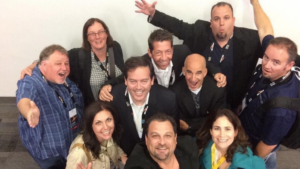It has often been said that the average person encounters over 5,000 marketing messages in a single day. And while that number has been disputed over the years, one thing is clear. The promotion field has become cluttered with the number of advertisements seen daily, from sponsored tweets and targeted YouTube advertising to traditional radio jingles; it’s now an accepted part of the vast array of communication available.
But how does one distinguish one ad from another? What makes a message resonate with consumers above the countless others out there? For many businesses, the answer lies in mindful marketing practices.
1. The Mindful Approach
Mindful marketing is a consumer-centered approach that closely aligns a company’s interests with those of society. It’s advertising that not only increases shareholders’ value, but also upholds and supports the values of a more just and sustainable world.
So can businesses succeed on Wall Street by ‘’going good ” on Main Street? Of course, they can, which is why I’m encouraging companies to make mindful messaging an essential part of their sales strategy. If you need some examples of how to get started, here are some simple rules to keep in mind.
2. Defining the Delivery: Asking the Right Questions
A key component of successful mindful marketing is framing the message around issues that genuinely matter to your clients. Is your communication with your core audience a one-way conversation? Or is it a robust dialogue where you listen to their concerns to create a company culture that reflects their needs?
For example, is it simply enough to say that you are the largest provider of a particular product? Or do consumers really care about the environmental and societal costs of producing it? Taking a mindful approach means being willing to engage your clients and learn what’s important to them.
When drafting questions to pose to your target audience, be prepared to ask more rhetorical ones. The idea is not to dictate what you feel the clients should be concerned about. Instead, you should ask both your internal and external customers questions designed to provoke and inspire creative thinking.
3. Building the Mindful Experience.
To facilitate this step with your clients, it’s critical to be in the moment.
Think about it. Multitasking has become an essential part of our culture. Texting our boss while standing in line for coffee and sending emails while at dinner with family and friends. There’s little wonder that many marketing messages seem fractured, as we are constantly being pulled in multiple directions.
By comparison, the mindful experience is one that depends on focusing on one priority at a time. Doing so will not only relieve stress but also give you the clarity to identify what’s vital to both your shareholders and your client base.
So how do you break the multitasking habit? Try thinking outside the box to include techniques such as taking walks, breathing exercises, or even meditation. The ultimate goal is to remove external distractions so you can recognize your message’s true objective.
4. Shifting Your Thinking
Once you create the perfect environment in which to train your mind to focus, it’s time to apply your audience’s responses to define your values. As you do, you may realize that maybe your company culture doesn’t quite measure up to the ever-changing needs of the marketplace. If this happens, there may be time for a major paradigm shift.
Change can definitely be scary. But take this as an opportunity to identify your purpose. When considering your next steps, make sure that you take the following into account:
- What changes are necessary and why?
- What effect will this have on your business’s bottom line?
- What effect will it have on society and your clients as a whole?
- How will we put this change into effect?
- What would success look like in six months? How about 12 months?
5. Delivering the Message:
When it comes to being a mindful marketer, delivering the message in a responsible way is just as important as the message itself. This means, taking time out to carefully examine what method (social, print, etc.) would work best to reach your base.
Selecting the perfect advertising vehicle should involve more than ROI. To ensure a proper synergy between customer and companies should consider the following:
- Is it ethical? In the case of print media-is the amount of materials distributed appropriate while environmentally sustainable?
- Is it honest? In the case of digital media-does it honestly describe the message being conveyed? Or would audiences see it as click bait?
- Is it responsible? Does the materials contribute to communications clutter?
Key Takeaways:
Mindful marketing is the practice of creating a value-based branding that allows businesses to align with socially responsible interests. Companies looking to take advantage of this should engage their target audiences to find out what concerns them most. Practitioners looking to tap into this strategy should avoid the traps of multitasking and look beyond the mental clutter to identify their company’s customers.
This post is dedicated to Janet Fouts and Tamara McCleary, two of the most mindful marketers I know!





